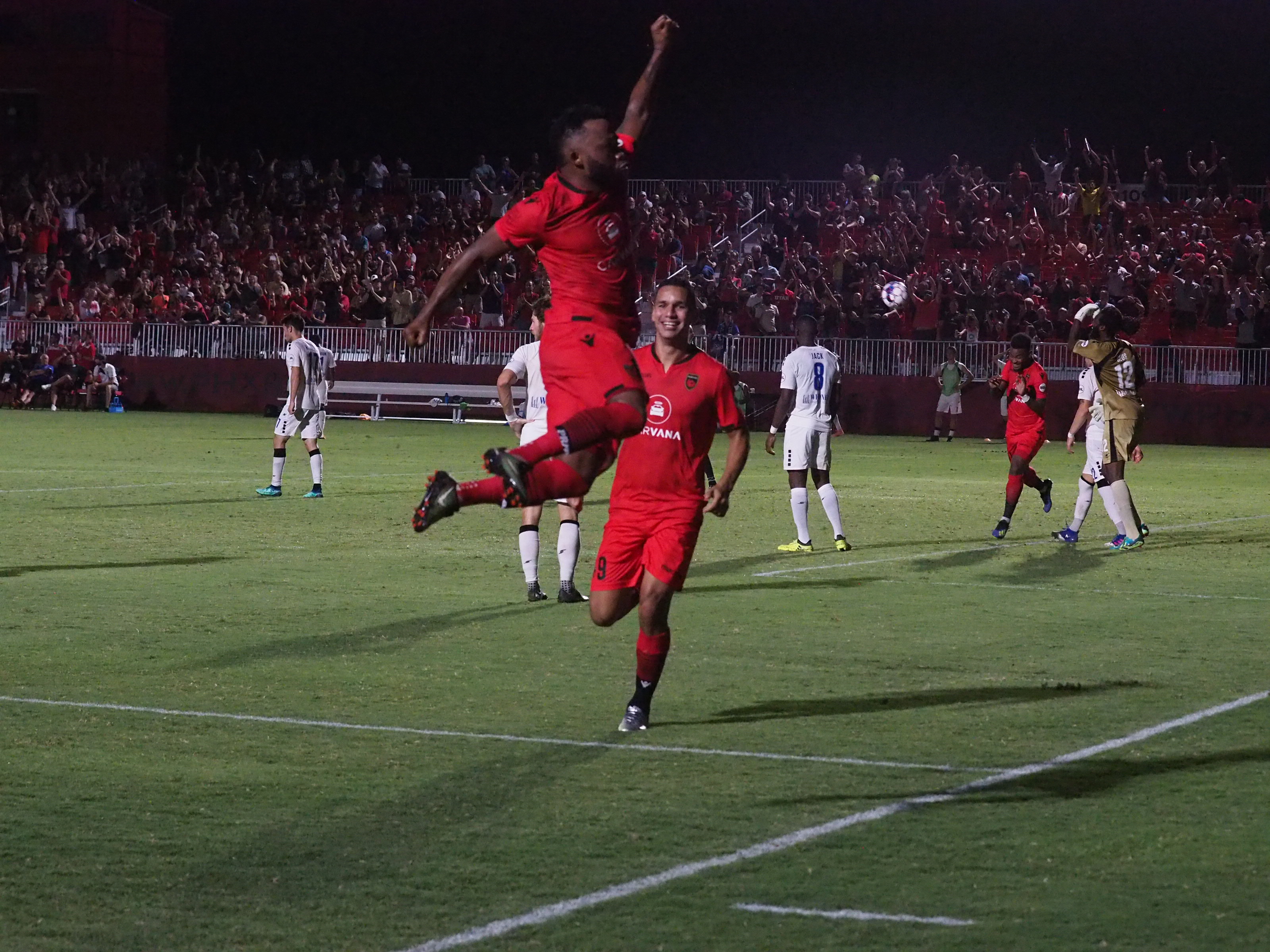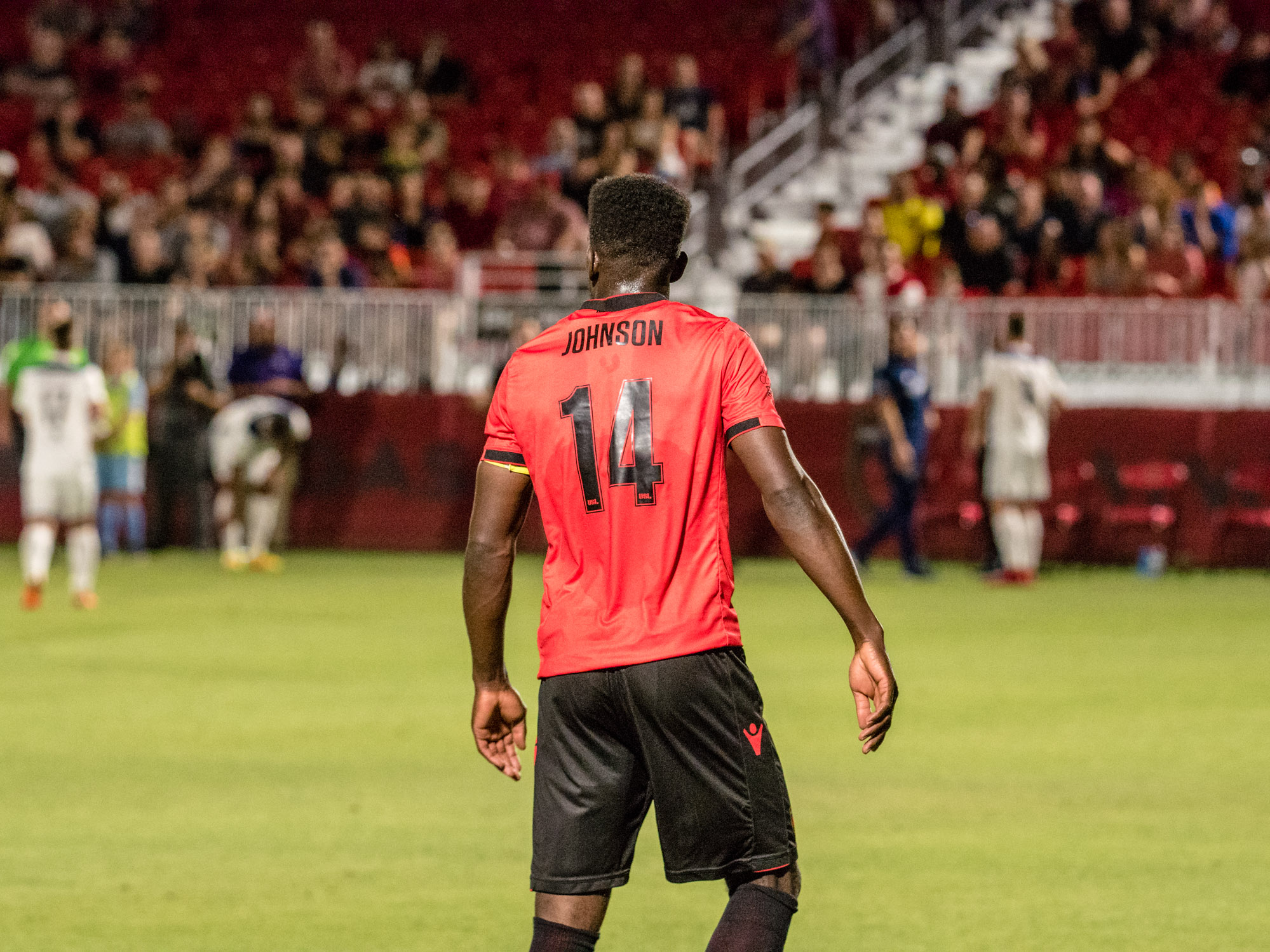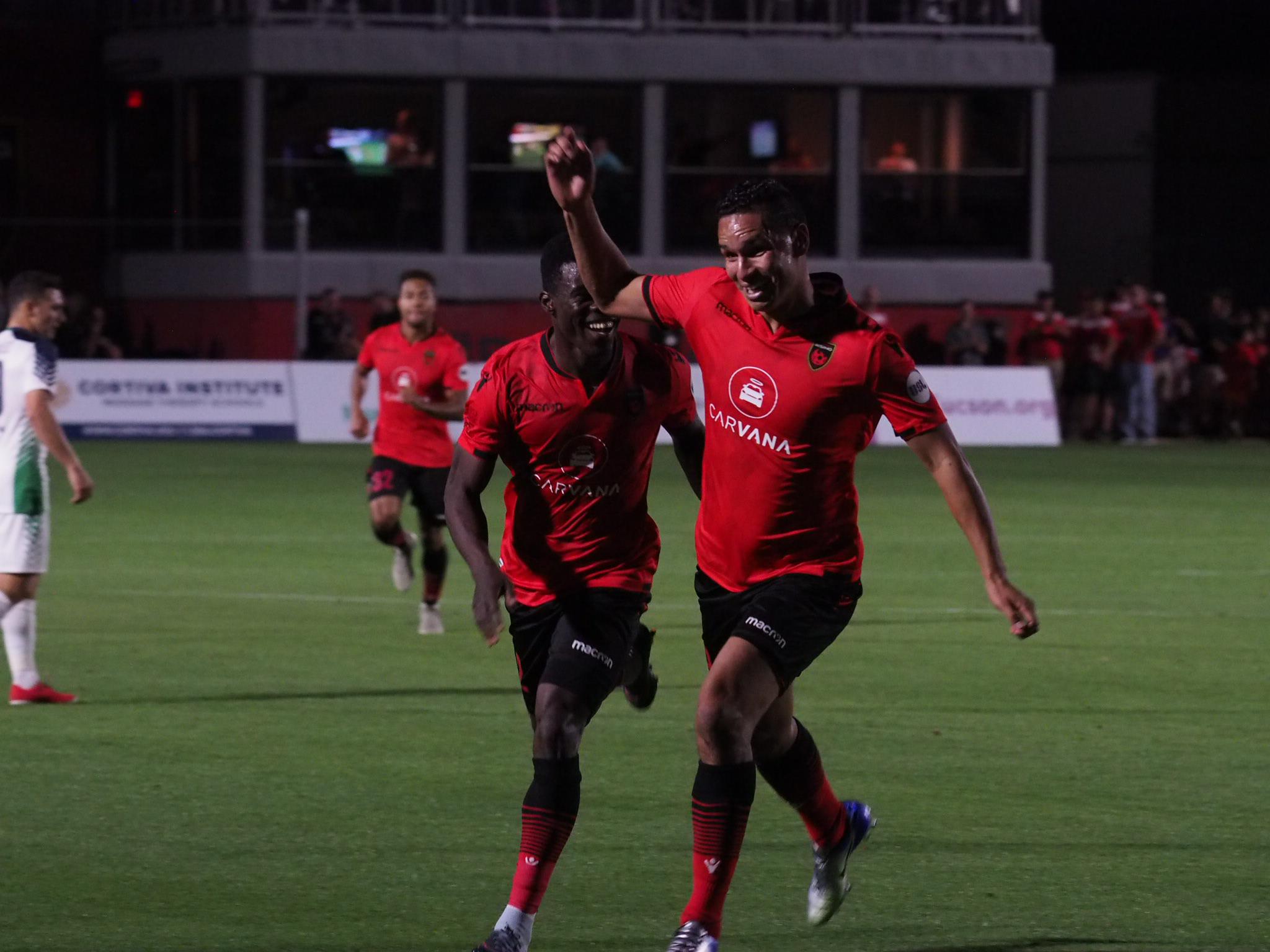Welcome to the first edition of Rising Tactics Recap, a weekly column where I will provide educational insight to Phoenix Rising fans by breaking down some strategic and tactical observations from Phoenix’s latest match.
Phoenix Rising’s first match of the 2019 USL Championship season was anything but dull. Coming back from three separate deficits to salvage a 3-3 draw against San Antonio FC made for an entertaining start to the season and provided viewers with the first meaningful glimpse of the coaching staff’s strategic planning and the team’s on-field execution.
The biggest area of weakness against SAFC was Phoenix’s defending in their own half. From the very start of the match, San Antonio were dangerous passing, moving, and dribbling through the wings, right around Phoenix’s outside defenders. All three of San Antonio’s goals came, at least indirectly, from the wings. Of course, with half of Phoenix’s backline new to the team this season, it is not surprising that there were some defensive struggles. Chemistry and communication are still developing.
Outside of visible communication issues, there were some areas of Phoenix Rising’s tactical setup and execution that San Antonio repeatedly exploited over the course of 90 minutes. First, outside defenders Amadou Dia and Mustapha Dumbuya were overly aggressive stepping to the ball at times. On SAFC’s second goal, Dia stepped hard to the ball, but missed the tackle and allowed Billy Forbes to get behind him.
It’s not all on the fullbacks (Dia and Dumbaya), though. The wingers (outside attackers who are typically tasked with helping the outside defenders defend), Junior Flemmings and Solomon Asante, were often too far inside to provide defensive support for their fullbacks. In the gif above, notice how Flemmings is positioned inside, unable to cover after Dia gets beaten.
Something very similar happened with Asante and the rest of Phoenix’s right side in the buildup to San Antonio’s third goal. Asante attempted to pressure high, but was unable to make the tackle. As SAFC played the ball wide, Asante couldn’t get back into the play to help Dumbaya defend multiple opposing attackers. Kevon Lambert came over from central midfield to help his right back, but Lambert did more harm than good by leaving a big gap in midfield.
Doueugui Mala was forced to foul, giving up the free kick that led to the corner that resulted in Adam Jahn’s own goal.
Between getting caught pressuring the opposition high up the field and drifting into the middle of the field to help mark opposing players, the wingers left a lot of defensive responsibility on the fullbacks, midfielders, and center backs.
Still, between the repeated defensive issues, there were moments where Phoenix effectively shut down San Antonio’s play on the wings. Look at the sequence of events in this clip:
Mala calmly steps to the ball and forces a backwards pass. Asante runs to the outside to pressure the ball. Dumbaya carefully steps out to pressure the ball. Lambert tracks the runner that tries to run behind Dumbaya. SAFC can’t break through.
The defensive foundation is there. Building consistency is the next step.
Offensively, we saw more than just a foundation. We saw a foundation with a few buildings under construction sitting on top of it. We saw glimpses of Rick Schantz’s possession system, based on passing the ball from the back and making decisive movements in the attacking half. Goalkeeper Carl Woszczynski’s pass map does an excellent job of illustrating Phoenix’s offensive style. There are far more short and medium-length passes than there are long balls and even most of the long balls are accurate ones.

Woszczynski looked consistently comfortable passing out of the back with his feet. The rest of the team was not as consistent as their goalkeeper, but still showed some promising moments in possession that threatened San Antonio. This whole clip is a great example of Phoenix Rising staying calm under pressure and patiently passing the ball from the back. Both of those things are tenants of Schantz’s preferred offensive style.
James Musa starts the play from deep in central midfield. Phoenix move the ball forward along their left side, break through San Antonio’s midfield, and move quickly into the attacking half. Nothing comes of this sequence, but the foundation for extremely dangerous attacking soccer in the future is there.
Now that we have looked at some of the offensive and defensive positives and negatives from Phoenix Rising’s first game of the season, it’s time to introduce the closing segment of Rising Tactics Recap. Each week, I’ll close out this column with a short, rapid fire section called “The Final Third”. In this last section, I will list a few scattered thoughts from the week’s game and introduce readers to a tactical term or idea. Without further ado, welcome to The Final Third.
- I thought central midfielder José Aguinaga had an excellent first game for Phoenix Rising. Aguinaga was instrumental in the lead up to the first two goals and provided a calming touch to Phoenix’s attack.
- Phoenix’s Lamar Batista/Mala center back pairing struggled for most of the game, but I’m still interested to see more from both of them, especially Batista. Batista’s comfort on the ball, passing, and defensive range make him an extremely intriguing player.
- As a striker, Jahn is capable of doing a lot more than scoring goals. His ability to pass and move play forward with his feet will be a real asset this season.
Now, for this week’s tactical term:
Since this section is called The Final Third, it seems only fitting that this week’s term is the “final third“. The final third is the last third of the field. It houses the most important thing on the field: the opponent’s goal. Phoenix Rising will look to attack and get numbers forward into the final third this season with a mixture of quick counter attacks and patient possession.
Thanks for reading the first ever edition of Rising Tactics Recap! Check back next week for more insight and analysis.




